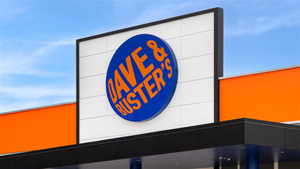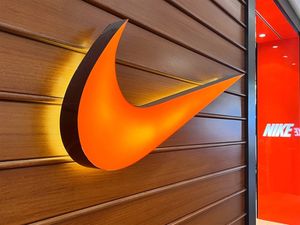
Flow control equipment manufacturer Flowserve (NYSE: FLS) missed Wall Street’s revenue expectations in Q4 CY2024 as sales only rose 1.3% year on year to $1.18 billion. Its non-GAAP profit of $0.70 per share was 9% below analysts’ consensus estimates.
Is now the time to buy Flowserve? Find out by accessing our full research report, it’s free.
Flowserve (FLS) Q4 CY2024 Highlights:
- Revenue: $1.18 billion vs analyst estimates of $1.20 billion (1.3% year-on-year growth, 1.7% miss)
- Adjusted EPS: $0.70 vs analyst expectations of $0.77 (9% miss)
- Adjusted EPS guidance for the upcoming financial year 2025 is $3.20 at the midpoint, missing analyst estimates by 1.1%
- Operating Margin: 10.6%, up from 9.4% in the same quarter last year
- Free Cash Flow Margin: 14.3%, similar to the same quarter last year
- Backlog: $2.79 billion at quarter end, up 3.5% year on year
- Market Capitalization: $8.15 billion
“We made significant progress throughout 2024, launching the Flowserve Business System and leveraging our 3D strategy to drive solid top-line growth, expand margins, increase adjusted earnings, and deliver strong cash flow,” said Scott Rowe, Flowserve’s President and Chief Executive Officer.
Company Overview
Manufacturing the largest pump ever built for nuclear power generation, Flowserve (NYSE: FLS) manufactures and sells flow control equipment for various industries.
Gas and Liquid Handling
Gas and liquid handling companies possess the technical know-how and specialized equipment to handle valuable (and sometimes dangerous) substances. Lately, water conservation and carbon capture–which requires hydrogen and other gasses as well as specialized infrastructure–have been trending up, creating new demand for products such as filters, pumps, and valves. On the other hand, gas and liquid handling companies are at the whim of economic cycles. Consumer spending and interest rates, for example, can greatly impact the industrial production that drives demand for these companies’ offerings.
Sales Growth
A company’s long-term performance is an indicator of its overall quality. While any business can experience short-term success, top-performing ones enjoy sustained growth for years. Over the last five years, Flowserve grew its sales at a sluggish 2.9% compounded annual growth rate. This fell short of our benchmarks, but there are still things to like about Flowserve.
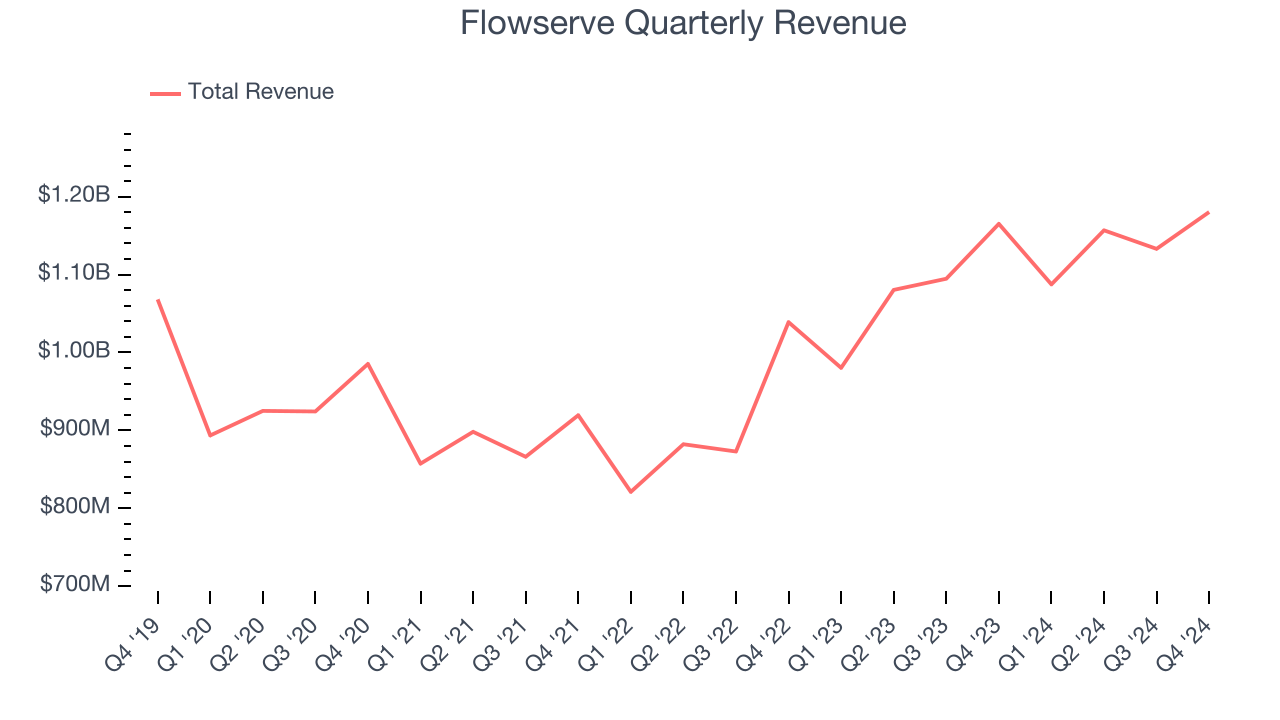
We at StockStory place the most emphasis on long-term growth, but within industrials, a half-decade historical view may miss cycles, industry trends, or a company capitalizing on catalysts such as a new contract win or a successful product line. Flowserve’s annualized revenue growth of 12.3% over the last two years is above its five-year trend, suggesting its demand recently accelerated. 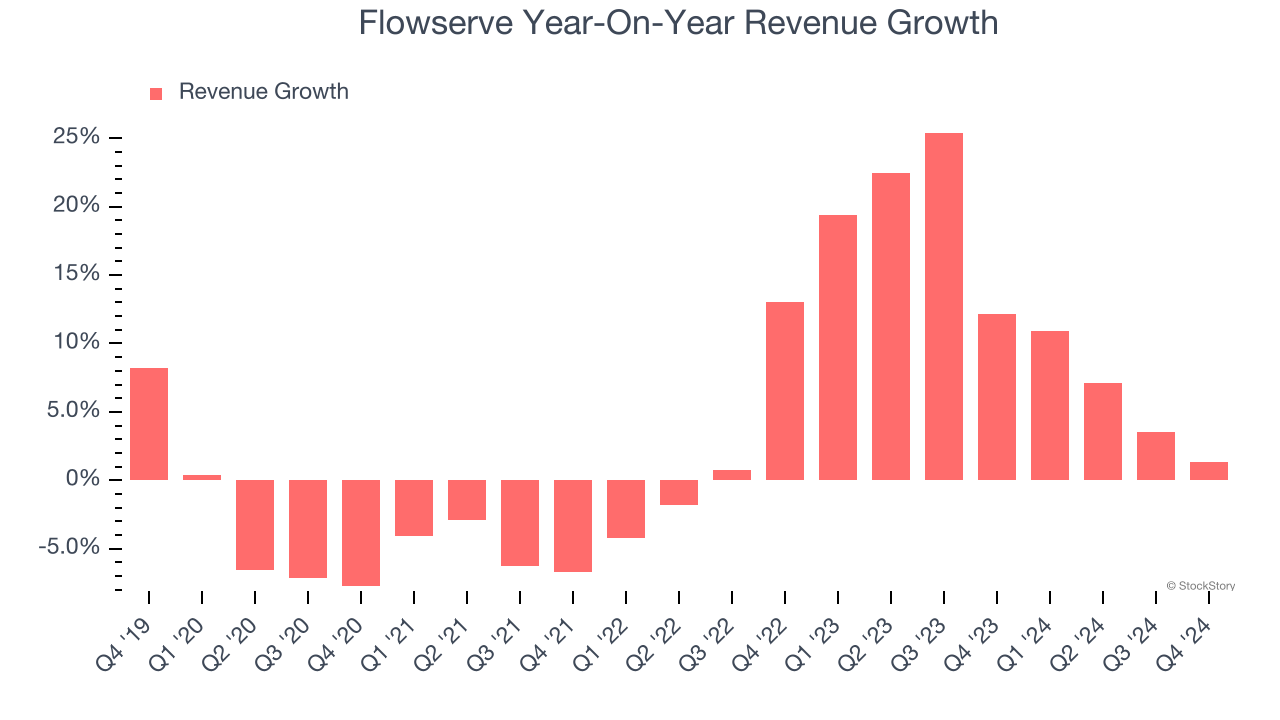
We can better understand the company’s revenue dynamics by analyzing its backlog, or the value of its outstanding orders that have not yet been executed or delivered. Flowserve’s backlog reached $2.79 billion in the latest quarter and averaged 5.6% year-on-year growth over the last two years. Because this number is lower than its revenue growth, we can see the company fulfilled orders at a faster rate than it added new orders to the backlog. This implies Flowserve was operating efficiently but raises questions about the health of its sales pipeline. 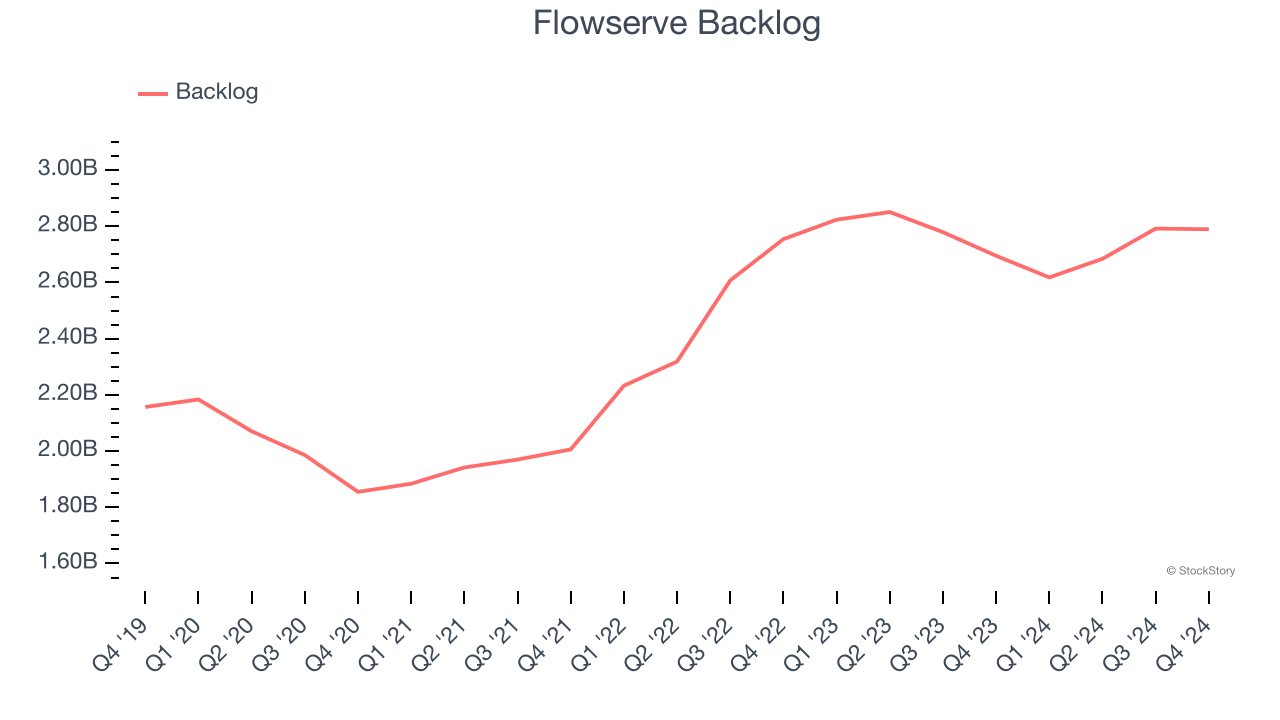
This quarter, Flowserve’s revenue grew by 1.3% year on year to $1.18 billion, falling short of Wall Street’s estimates.
Looking ahead, sell-side analysts expect revenue to grow 6.9% over the next 12 months, a deceleration versus the last two years. This projection is underwhelming and indicates its products and services will see some demand headwinds. At least the company is tracking well in other measures of financial health.
Here at StockStory, we certainly understand the potential of thematic investing. Diverse winners from Microsoft (MSFT) to Alphabet (GOOG), Coca-Cola (KO) to Monster Beverage (MNST) could all have been identified as promising growth stories with a megatrend driving the growth. So, in that spirit, we’ve identified a relatively under-the-radar profitable growth stock benefiting from the rise of AI, available to you FREE via this link.
Operating Margin
Operating margin is an important measure of profitability as it shows the portion of revenue left after accounting for all core expenses – everything from the cost of goods sold to advertising and wages. It’s also useful for comparing profitability across companies with different levels of debt and tax rates because it excludes interest and taxes.
Flowserve was profitable over the last five years but held back by its large cost base. Its average operating margin of 7.7% was weak for an industrials business.
On the plus side, Flowserve’s operating margin rose by 3.4 percentage points over the last five years.
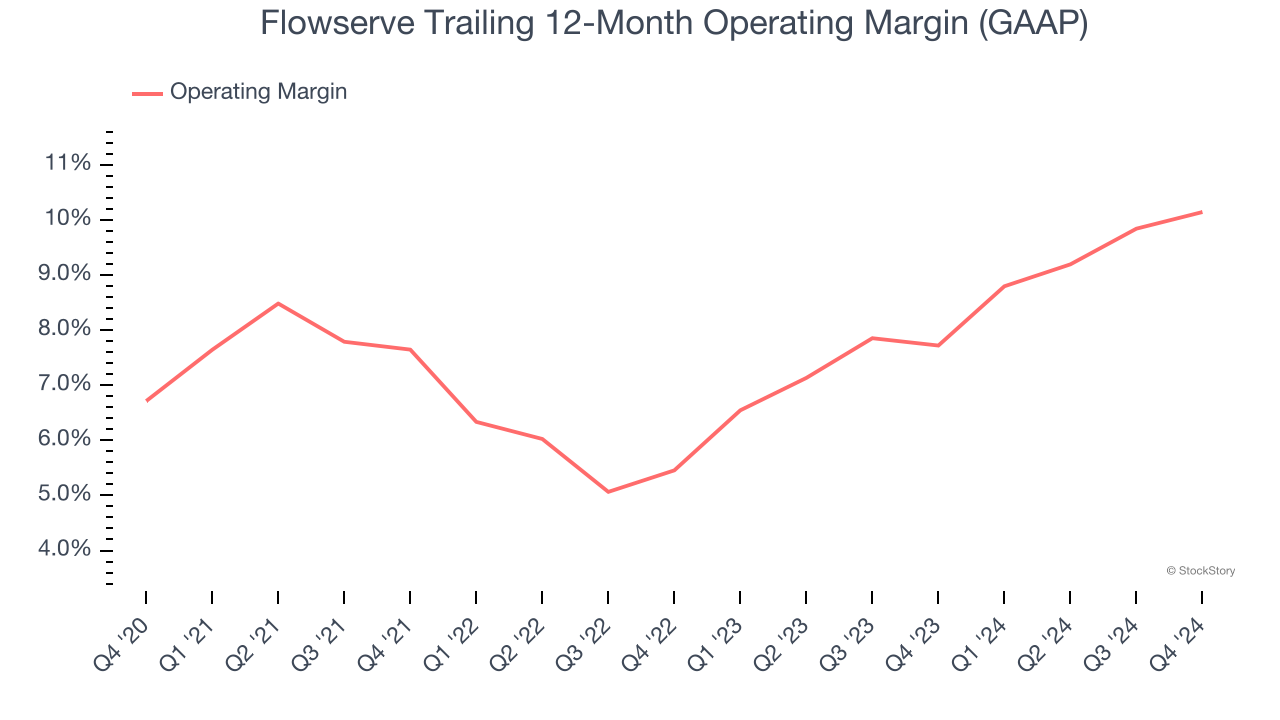
In Q4, Flowserve generated an operating profit margin of 10.6%, up 1.2 percentage points year on year. Since its gross margin expanded more than its operating margin, we can infer that leverage on its cost of sales was the primary driver behind the recently higher efficiency.
Earnings Per Share
Revenue trends explain a company’s historical growth, but the long-term change in earnings per share (EPS) points to the profitability of that growth – for example, a company could inflate its sales through excessive spending on advertising and promotions.
Flowserve’s EPS grew at an unimpressive 4.1% compounded annual growth rate over the last five years. On the bright side, this performance was better than its 2.9% annualized revenue growth and tells us the company became more profitable on a per-share basis as it expanded.
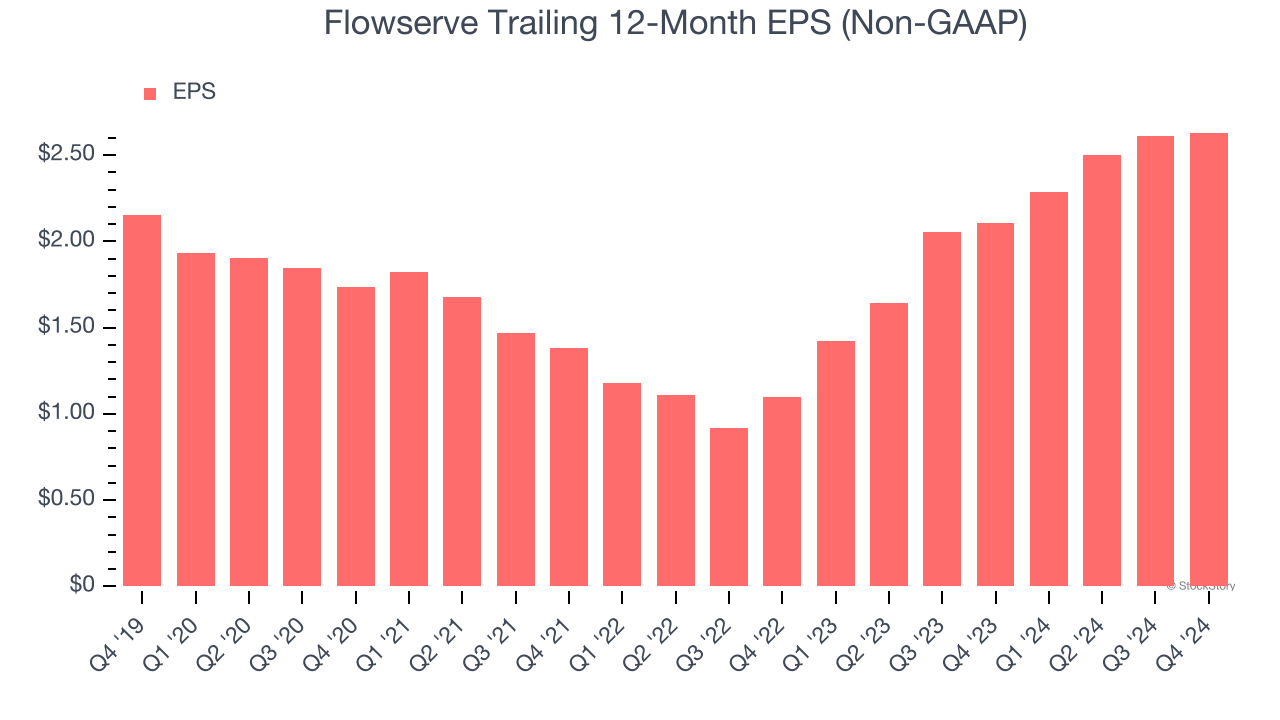
Diving into the nuances of Flowserve’s earnings can give us a better understanding of its performance. As we mentioned earlier, Flowserve’s operating margin expanded by 3.4 percentage points over the last five years. This was the most relevant factor (aside from the revenue impact) behind its higher earnings; taxes and interest expenses can also affect EPS but don’t tell us as much about a company’s fundamentals.
Like with revenue, we analyze EPS over a more recent period because it can provide insight into an emerging theme or development for the business.
For Flowserve, its two-year annual EPS growth of 54.7% was higher than its five-year trend. This acceleration made it one of the faster-growing industrials companies in recent history.
In Q4, Flowserve reported EPS at $0.70, up from $0.68 in the same quarter last year. Despite growing year on year, this print missed analysts’ estimates. Over the next 12 months, Wall Street expects Flowserve’s full-year EPS of $2.63 to grow 24.4%.
Key Takeaways from Flowserve’s Q4 Results
We were impressed by how significantly Flowserve blew past analysts’ backlog expectations this quarter. On the other hand, its EPS missed significantly and its revenue fell short of Wall Street’s estimates. Overall, this was a weaker quarter. The stock traded down 3.5% to $60.90 immediately following the results.
Flowserve’s latest earnings report disappointed. One quarter doesn’t define a company’s quality, so let’s explore whether the stock is a buy at the current price. When making that decision, it’s important to consider its valuation, business qualities, as well as what has happened in the latest quarter. We cover that in our actionable full research report which you can read here, it’s free.



